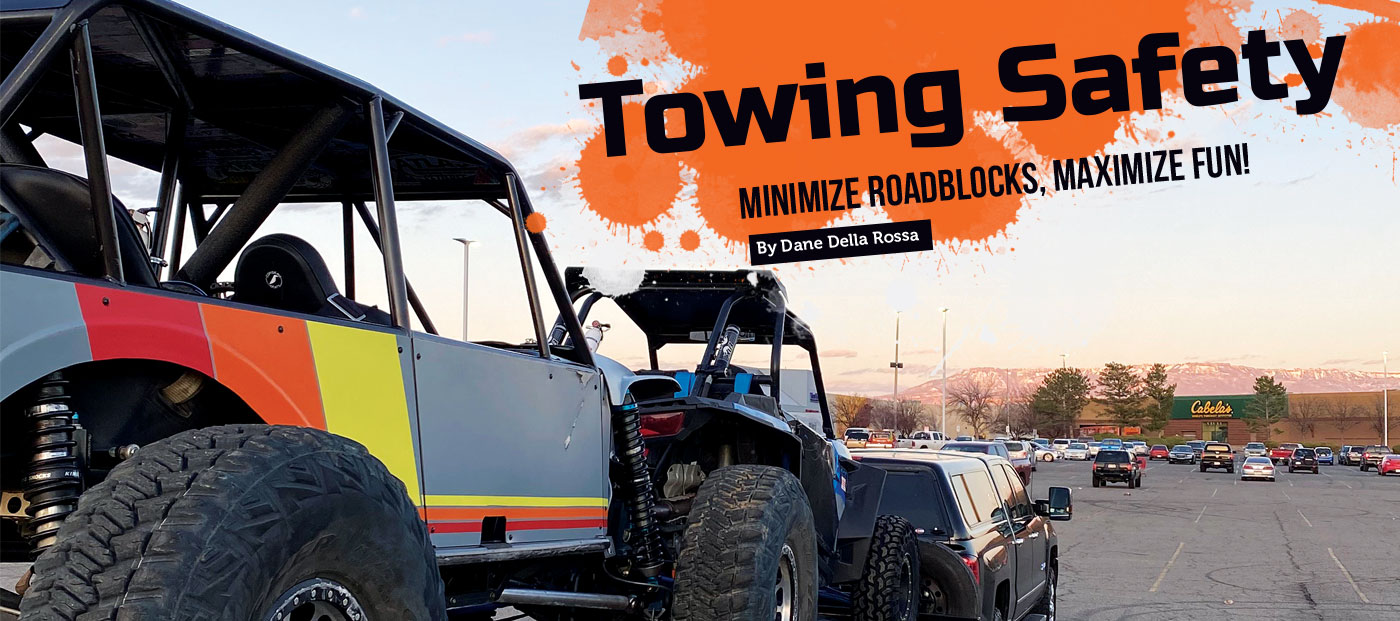It may be winter, but it is never too early to start prepping for a safe riding season.
If you live near the veiny network of ATV/OHM trails around the state - you can jump on your machine at home, flick the throttle, and you’re sending rooster tails down the path. Maybe you drive to the OHV trails in your lightly built jeep. There’s something to be said about good ol’ fashioned 4WD, without spending a ton of money on lockers, tires, and axles.
However, a large portion of us either live too far from our favorite trails, or…our rigs are too: tall, wide, heavy, slow, or unreliable. In many cases, we wouldn’t make it 10 miles without a ticket or breakdown. Trailering becomes the only option. It also offers peace of mind when you know you’ll still make it home if (or when) the unexpected happens. Whether pondering your first time with a 3-piece entourage, or refreshing decades of hauling experience, here are some things to consider.
Know how much your current toy weighs
How much your rig weighs will determine the size of trailer you need. Also keep in mind if you or plan to build it more in the future. Future modifications add weight, so does buying if you get a bigger and badder whip every year.

Know how much your tow rig can pull
Look up what your engine, tranny and gear ratio is capable of per manufacturer recommendations. Find out what class hitch you have. The one that came with the truck might not match its capabilities.
Do you need a trailer brake controller (recommended for trailers over 1k)? Some newer vehicles have them built in, or at least have wiring under the dash for easy install.
Know what your trailer can handle
You can usually find a sticker on the front of the frame that tells the GVWR. Keep in mind, if you have two 3,500 pound trailer axles, you can’t tow a 7,000 pound crawler.
You must subtract how much the trailer structure weighs from the total capacity. Essentially, you can only put a 4,500 pound vehicle atop that same trailer. If you overload it, you run the risk of bending the axles and stressing components.
Know how to put it all together
Make sure your tow vehicle parking brake is on when loading. Match your hitch ball to the correct size of the trailer coupler; attach safety chains and wiring harness from trailer to your truck. Make sure you have sturdy ramps (consider adding support jacks or wood under the rear of the trailer frame when loading if your rig is heavy). If the trailered rig is 4x4, drive it up on the trailer in 4low.
Also set the parking brake of your rig once on the trailer, if it has one. Position your rig so there’s appropriate tongue weight (10-15%). Too far forward, and you’ll stress the tow vehicles rear suspension and make it hard to steer; too far back, and the trailer will wander and bounce.
Know how to keep it all together
If you require weight distribution bars, this would be the time to add them, after the weight is on the trailer. Make sure your tie-down straps are proper rating (there is a difference between “working load” and “maximum breaking strength”). Whenever possible, attach straps below the frame, so that the vehicle suspension is allowed to work together with the trailer suspension. Run straps from the axle to the closest and straightest tie down location on the trailer and avoid fragile components that can get pinched, and obstructions that could cut your straps.
In the case of not having tie down points, things like stake pocket adapters are very handy. Make sure when you’re ratcheting, to get a full wrap on the ratchet cam before it starts to tighten down the vehicle. The strap will be less likely to loosen that way. Leave the ratchet handle outboard of the vehicle if possible, that way, you don’t have to crawl underneath every time you want to re-tighten them. Be sure to check the strap tension when you’re ready to roll out, and again every time you stop, or at least within 50-100 miles of starting the journey.

Know your way around the tow rig
Make sure the fluids are topped off; make sure the brakes and tires are in good condition (correct tow rating). Test the trailer brakes and settings. Make sure that the trailer brakes engage slightly before the vehicle brakes (you can adjust the gain up or down depending on driving conditions). Also know how to manually engage the brake controller.
Know your way around the trailer
Check that lens covers aren’t broken, lights work, brake, running, turn signals; tires are inflated and not bald or cracked; hubs are greased (under 10k), oil is full (above 10k); license plate is attached. If you have an emergency runaway brakes cable on the trailer, make sure it’s attached and not frayed. Also feel the trailer hubs each time you stop; make sure they aren’t too hot to touch.
When it comes to getting ourselves and others we share the road with to the destination, it doesn’t save time to take any shortcuts on safety.




